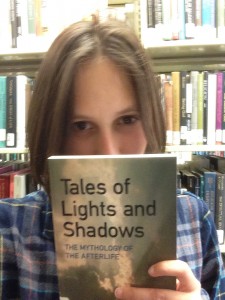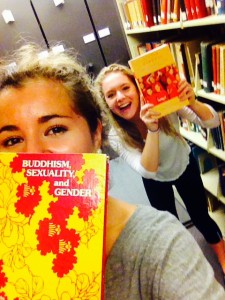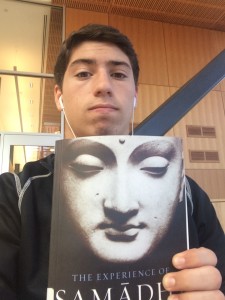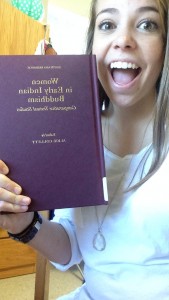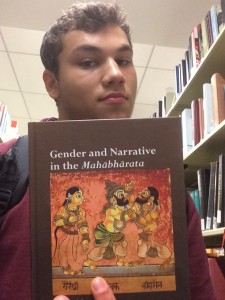Over the past month I have enjoyed learning about some of the social implications of Hinduism, Jainism, and Buddhism. I was specifically interested to learn how religion helped shape social hierarchies and constructed certain roles women were supposed to play.
Initially I used the library catalog’s “one search” feature to find relevant sources. I used keywords combinations like, “women, Hinduism, Jainism, Buddhism.” Initially I found some very obscure titles but after some browsing I began to useful articles and essays in Journals. Though the texts were not books, some off these periodicals had relevant titles such as, “Women’s wealth and worship: female patronage of Hinduism, Jainism, and Buddhism in medieval Tamilna.”
Eventually I came across a book titled, “Faces of the Feminine in Ancient, Medieval, and Modern India.” The book was published in 2000 and had a plain black cover with a simple title on the spine. It was found on the second floor in a section with other books about women and feminism around the world. The books adjacent to the one I found had titles such as, “Resurgence of Indian Women,” “Feminism in India”, and “Portraits of Chinese women in Revolution.” The shelves above and bellow contained books about women in other regions of the globe such as, “Women in Kuwait.”
After looking through the table of contents, I found a section titled, “Usable Women” which discusses the portrayal of women in the epics. It looks to be a very useful chapter especially for a potential essay topic on women and the social heirachy dictated by religion. I found the chapter interesting because the author argued that women only marginally enjoyed a more free life in the in ancient India. The epics testify to the subordination of women’s interests to those of their male counterparts, noting that women did not have decision-making roles and were often absent from the narrative all together. It used the dharmaśāstras as an example. They were a code of conduct formulated by men for the supposed purpose of governing the lives of both men and women. In the dharmaśāstras, women’s lives were bound by much more rigid requirements. I think a close analysis of ancient texts and their influence on women could be very useful in my paper.



